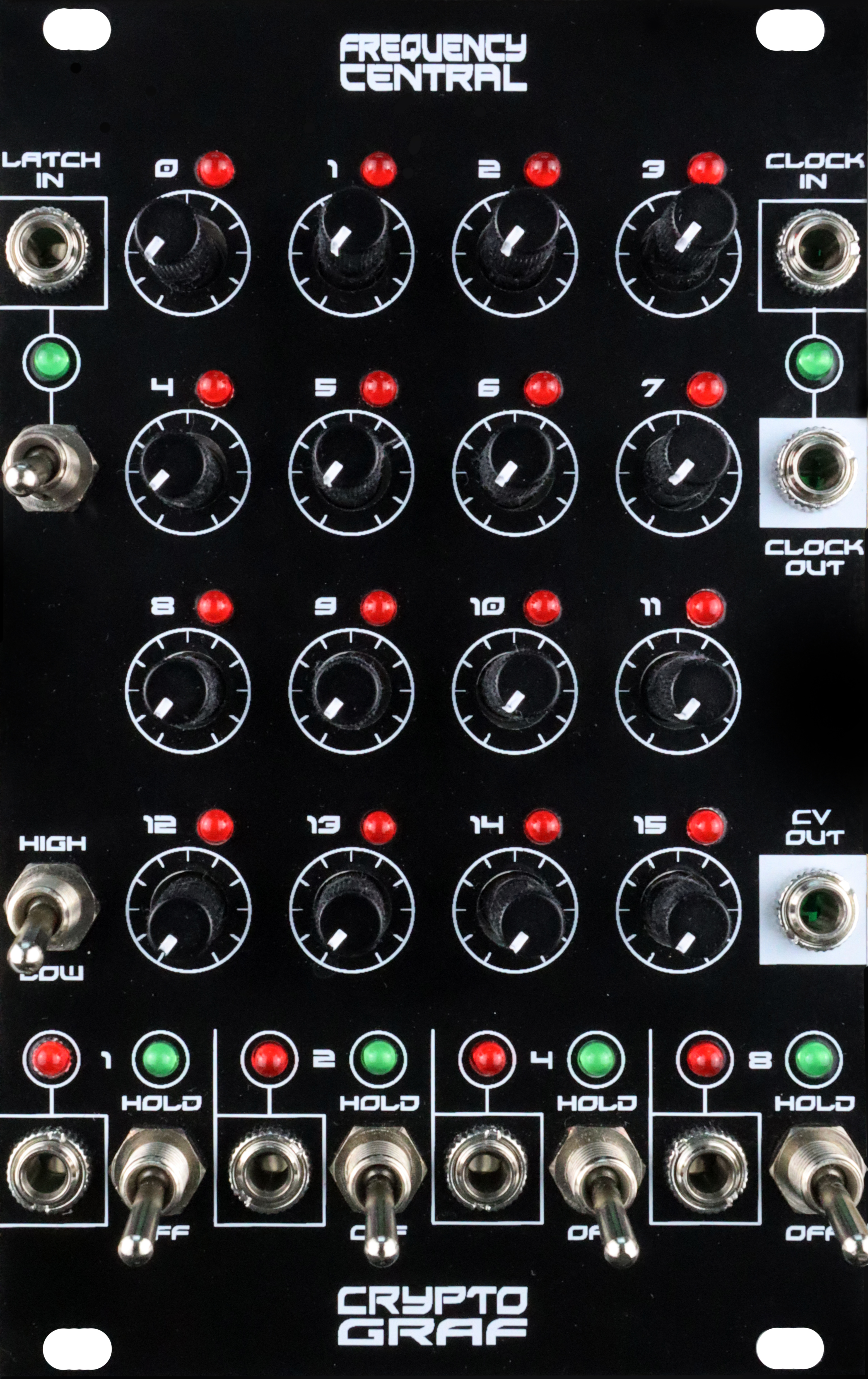Description
Cryptograf is a 4 bit to 16 step addressable analogue sequencer. Each of it’s 16 steps can be addressed in any order for ultimate creative flexibility.
Cryptograf pairs nicely with Polygraf; together they make a powerful combination for prepared – yet also improvisational – melodic sequences.
Cryptograf features 4 address inputs, 1, 2, 4 and 8, each of which has an associated input socket as well as a 3 position state switch which allows each address input to be held high, respond to input signals, or held low.
Each input has two status LEDs. The red LED displays the signal present at the input socket, while the green LED displays the status of the address input.
The combination of signals present at the input sockets, together with the positions of the state switches allows Cryptograf to have 16 different output states, numbered from 0 through to 15.
The output state of Cryptograf can be ascertained by observing which of the 4 address inputs are high. So, for example:
- if no green status LEDs are on, Cryptograf is in output state 0
- if green status LED 4 is on, Cryptograf is in output state 4
- if green status LEDs 1, 2 and 4 are on, Cryptograf is in output state 7
- if green status LEDs 2 and 8 are on, Cryptograf is in output state 10
…..and so forth.
Each output state has an associated LED and potentiometer. The potentiometer can be set to a desired voltage which will then be present at the CV output whenever Cryptograf is in that particular output state.
Additionally, there is a master range switch for determining the voltage range of all the output states, either high (…), or low (…).
The input sockets may be addressed by various external modules, for example:
- FC Pocket Calculator, FC High Towers, or similar clock dividers with multiple outputs from other manufacturers.
- FC Polygraf or similar grid editors from other manufacturers.
- FC Touch Me Here or similar momentary or latched manual gate modules
Clearly, we here at FC would nudge you towards Polygraf as the most flexible way to address Cryptograf, they were designed to be together and share a deep and enduring love for each other. This successful partnership allows Cryptograf to be addressed in many ways, for example:
- Forwards from 0 through to 15
- Backwards from 15 through to 0
- by repeating rows, or by repeating columns
- Asequentially, in any order you choose
As Polygraf is capable of storing many user patterns which themselves are selectable by CV, multiple chained patterns are possible. Furthermore, we accept that users will discover their own unique combinations of FC and third party modules to address Cryptograf, always bearing in mind that at any time the status of any of the 4 input sockets may be overridden by the 4 state switches.
Latch function
Cryptograf may be latched manually via the Latch toggle switch, or externally via the Latch input. When Cryptograf is latched, the last output state to go high is held until Cryptograf is unlatched. Additionally, when latched, the clock output is held low.
Clock input / clock output
Cryptograf does not require a clock input to function, nor does it contain an internal clock. The clock input/clock output circuit can be thought of as a ‘clock thru’ with a couple of useful additions:
- Incoming clocks or LFOs are comparated and outputted as square waves
- Clock output is held low when Cryptograf is latched
By sending a clock through Cryptograf, and utilising the latch input, legato notes may be programmed by use of external modules.

